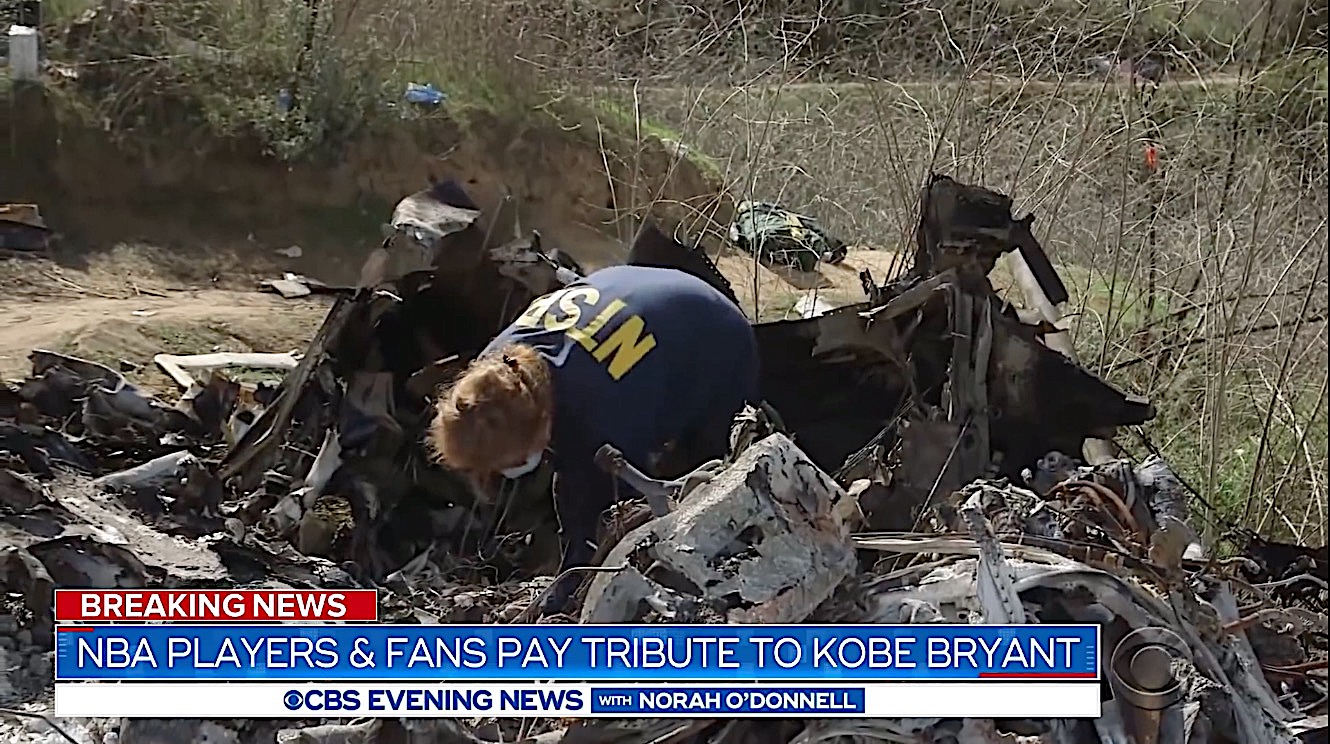The helicopter carrying Kobe Bryant, 8 others didn't have recommended warning system, NTSB says


The chartered Sikorsky S-76B helicopter that crashed Sunday, killing Kobe Bryant, his daughter Gianna, and seven other people it was ferrying across Los Angeles, did not have a recommended warning system designed to alert the pilot the aircraft was too close to the ground, National Transportation Safety Board officials said late Tuesday. The helicopter, flown by experienced pilot Ara Zobayan, crashed into the side of a hill in Calabasas soon after Zobayan told flight controllers he was flying higher to get above thick clouds.
"This is a pretty steep descent at high speed," said the NTSB's Jennifer Homendy. "We know that this was a high-energy impact crash." The NTSB did not fault Zobayan or question his decision to continue flying in thick fog, though some other pilots did, and it's not clear a Terrain Awareness and Warning System (TAWS) would have prevented the crash. Zobayan, 50, had flown the same Orange County to Ventura County route numerous times, including on Saturday, though the fog compelled him to veer from his normal route.

By the end of Tuesday, the bodies of all nine victims and the wreckage of the helicopter had been recovered, and Bryant, Zobayan, John Altobelli, and Sarah Chester had been identified via fingerprints. Along with Bryant, Altobelli, and Chester, the helicopter's passengers were 13-year-old Gianna Bryant and Payton Chester, Keri and Alyssa Altobelli, and Christina Mauser.
The Week
Escape your echo chamber. Get the facts behind the news, plus analysis from multiple perspectives.

Sign up for The Week's Free Newsletters
From our morning news briefing to a weekly Good News Newsletter, get the best of The Week delivered directly to your inbox.
From our morning news briefing to a weekly Good News Newsletter, get the best of The Week delivered directly to your inbox.
The NTSB had recommended that all helicopters be equipped with TAWS after a Sikorsky S-76A crashed into the Gulf of Mexico near Galveston in 2004, killing all 10 people on board, but the Federal Aviation Administration decided after 10 years to only require the warning systems on air ambulances. "The NTSB said FAA's response was unacceptable, but dropped the matter," The Associated Press reports.
A free daily email with the biggest news stories of the day – and the best features from TheWeek.com
Peter has worked as a news and culture writer and editor at The Week since the site's launch in 2008. He covers politics, world affairs, religion and cultural currents. His journalism career began as a copy editor at a financial newswire and has included editorial positions at The New York Times Magazine, Facts on File, and Oregon State University.
-
 Political cartoons for January 3
Political cartoons for January 3Cartoons Saturday's political cartoons include citizen journalists, self-reflective AI, and Donald Trump's transparency
-
 Into the Woods: a ‘hypnotic’ production
Into the Woods: a ‘hypnotic’ productionThe Week Recommends Jordan Fein’s revival of the much-loved Stephen Sondheim musical is ‘sharp, propulsive and often very funny’
-
 ‘Let 2026 be a year of reckoning’
‘Let 2026 be a year of reckoning’Instant Opinion Opinion, comment and editorials of the day
-
 Nobody seems surprised Wagner's Prigozhin died under suspicious circumstances
Nobody seems surprised Wagner's Prigozhin died under suspicious circumstancesSpeed Read
-
 Western mountain climbers allegedly left Pakistani porter to die on K2
Western mountain climbers allegedly left Pakistani porter to die on K2Speed Read
-
 'Circular saw blades' divide controversial Rio Grande buoys installed by Texas governor
'Circular saw blades' divide controversial Rio Grande buoys installed by Texas governorSpeed Read
-
 Los Angeles city workers stage 1-day walkout over labor conditions
Los Angeles city workers stage 1-day walkout over labor conditionsSpeed Read
-
 Mega Millions jackpot climbs to an estimated $1.55 billion
Mega Millions jackpot climbs to an estimated $1.55 billionSpeed Read
-
 Bangladesh dealing with worst dengue fever outbreak on record
Bangladesh dealing with worst dengue fever outbreak on recordSpeed Read
-
 Glacial outburst flooding in Juneau destroys homes
Glacial outburst flooding in Juneau destroys homesSpeed Read
-
 Scotland seeking 'monster hunters' to search for fabled Loch Ness creature
Scotland seeking 'monster hunters' to search for fabled Loch Ness creatureSpeed Read
